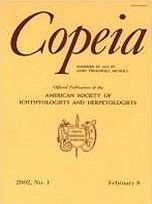The present study examined gonadal development and sexual pattern in two populations of the black-tailed dascyllus Dascyllus melanurus in Madang, Papua New Guinea (5°10′S, 145°48′E) from 31 March to 26 June 1996. Two populations differed in their social organizations. In the Guzem population, small fish occurred in groups of 10–20 around single coral colonies and large fish occurred in groups of 50–100 over a continuous cover of corals. In the Kranket population, fish occurred in groups of a few to 20 around single or clusters of two to three corals. A total of 81 and 119 fish, respectively, were examined histologically. After an initially undifferentiated state, gonads of D. melanurus developed oocytes in the primary growth stage, followed by an ovarian lumen. From this ovarian state or from more developed ovaries, some gonads developed into testes through degeneration of oocytes and development of spermatogenic tissue. No fish had gonads that simultaneously contained both degenerating vitellogenic oocytes and developing spermatogenic tissue, but some fish had gonads that contained both degenerating oocytes in the primary growth stage and developing spermatogenic tissue (termed as mixed-stage gonads). The size distributions of fish with mixed-stage gonads differed between the two populations in a manner that was predicted from the theories of sex allocation and mating systems. In the Guzem population, most fish with mixed-stage gonads were smaller than the smallest mature female, which indicated that functional sex change was infrequent. In the Kranket population, the majority of fish with mixed-stage gonads were within the size range of mature females, which indicated that functional sex change was present and was more frequent than in the former population. Presence of fish with mixed-stage gonads in the size range of mature females indicated that D. melanurus was a protogynous hermaphrodite, but two populations differed in the frequency of functional sex change.
How to translate text using browser tools
1 December 2005
Frequency of Functional Sex Change in Two Populations of Dascyllus Melanurus Conforms to a Prediction from Sex Allocation Theory
Kazue Asoh
ACCESS THE FULL ARTICLE





